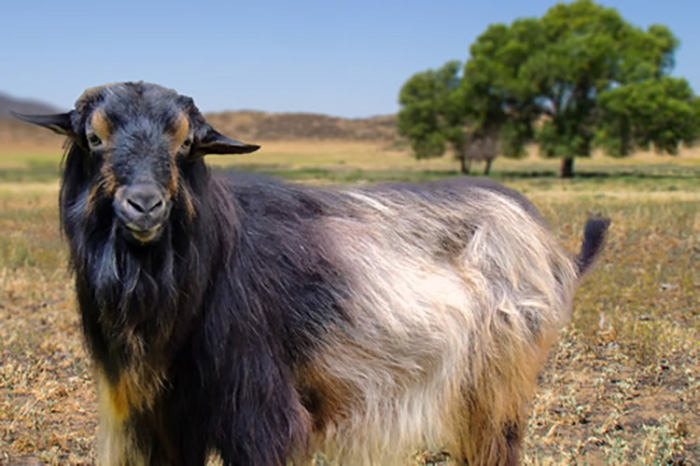
Meet Papadum the Goat! Papadum is a descendent from a rare population of goats that used to inhabit the San Clemente Island, and notably, Papadum also now holds the world record for the most contiguous non-model mammalian genome. The recipe for a his amazing de novo genome assembly? Long reads, optical mapping, and Proximo Hi-C genome scaffolding. Read NIH’s article about Papadum’s genome here.
The goat genome has been of scientific interest for several reasons: goats are important suppliers of milk, cloth, meat, and more. But prior to the Papadum genome, scientists’ ability to fully understand how the goat genome controls its biology was limited. As a part of the “Feed the Future” initiative, in 2014 the U.S. Agency for International Development awarded innovative scientists Dr. Tim Smith, Dr. Derek Bickhart and Dr. Adam Phillippy a grant to attempt to eliminate these limitations by assembling Papadum’s genome. As pioneers in the genomics field, the scientists teamed up to leverage two rather young technologies, long reads and Hi-C, to create an ultra-high-quality new assembly of the goat genome.
Their efforts ultimately led to the creation of the highest quality de novo genome assembly of a mammal to date and are published in Nature Genetics. With this new reference-quality goat genome, scientists will have a better understanding of goat biology and health to guide better breeding decisions, improving traits like milk production, meat quality, and resilience from disease.
The Papadum genome assembly includes large DNA sequences called “chromosome-scale scaffolds” which are nearly complete representations of entire chromosomes from Papadum. These chromosome-scale scaffolds are critical achievement that allows far better understanding of the mechanics of the goat genome than earlier, less advanced results, which included thousands of tiny fragments of chromosomes and lacked the overall structure of the goat genome. The difference is not unlike having an entire intact book, versus a jumble of all the individual words from the book.
The ability to reconstruct nearly complete chromosomes was made possible largely by a new technique called Proximity-Guided Assembly, performed with Phase Genomics’ ProximoTM Hi-C scaffolding technology. This process was followed by a tool called PBJelly, which identifies and closes gaps (regions of uncertainty) in the chromosome-scale scaffolds. After Proximo and PBJelly, the resulting assembly included 31 chromosome-scale scaffolds containing only 663 gaps total across the 3 billion base pair diploid genome. Descended from research first published in 2013, Phase Genomics has since successfully demonstrated the success of the Proximo Hi-C scaffolding method in the genomes of plants, animals, fungi and more.
Papadum’s genome marks the beginning of an era where reference-quality genomes are achievable and affordable for any organism, not just extensively studied model organisms like mice, fruit flies, and humans. The availability of these extraordinarily complete genomes enables scientists to answer many new biological questions that have the potential to help farmers, government agencies, agricultural companies, and developing countries solve a significant part of the food security problem.
Read more about the grant, the scientists, and Papadum’s genome on the NIH’s National Human Genome Research Institute website.

 Twitter
Twitter LinkedIn
LinkedIn Email
Email